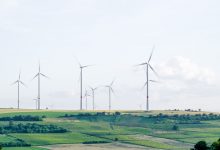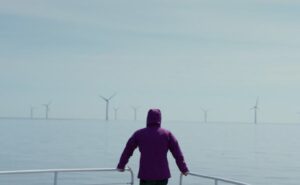Nearly 60 per cent of all electricity fed into the German grid in the first three months of 2024 came from renewable energy sources, shows data published by the country’s statistical office (Destatis).
Renewable power production grew to a first-quarter record share of 58.4 percent, while total domestic electricity production fell by 7.5 percent. Wind power was the largest domestic power source in the first quarter, expanding its output by 12 percent year-on-year to reach a share of 38.5 percent.
All renewable power sources increased their share, including hydropower plants. Conventional energy sources contributed 41.6 percent: coal-fired power production fell to a share in the grid of 23 percent, while natural gas’s share fell to a share of just under 16 percent.
Contrary to the first quarter of 2023, nuclear energy no longer contributed any electricity to the grid. Despite the closure of nuclear, a report earlier this week noted that Germany’s lignite power production fell to the lowest level since 1963 last year, while hard coal power production even dropped to the lowest level since 1955.
Renewable power production contributed to more than half of the electricity consumption for a full year for the first time in 2023.
The government aims to bring the share to 80 percent by 2030. The drop in Germany’s electricity production as well as in total energy consumption in early 2024 was in part caused by weaker economic development, warm weather, and high energy prices, said energy industry initiative AGEB earlier this week.
This article was originally published on Clean Energy Wire. Reproduced here under a “Creative Commons Attribution 4.0 International Licence (CC BY 4.0)” . Read the original version of the story here.








